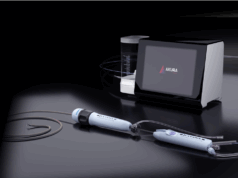
Charles E Ray Jr, professor and chair of the Department of Radiology, College of Medicine, University of Illinois, Chicago, USA, assumed the office of president of the Society of Interventional Radiology (SIR) during the society’s annual scientific meeting in April 2016. “The minimally invasive nature of interventional radiology will prove more cost-effective than alternatives such as medical management or surgery, nearly universally,” he told Interventional News.
As the new president 2016, what are your main goals for interventional radiology in the USA?
Our primary goals are continued education and implementation of the new interventional radiology residency, growing SIR’s international presence, and continued focus on economics and healthcare policy. Regarding web-based learning opportunities, SIR understands the importance of delivering onsite and distant learning opportunities. In this ever changing educational environment, we must offer robust educational programmes across all learning platforms in order to be valuable and current.
How can interventional radiologists add to their repertoire of therapies?
We speak often about the limitless potential of interventional radiology to solve the toughest medical problems and about our collaboration with other medical specialties across the spectrum. Growth areas could include performing new procedures for treatments and diagnoses of familiar problems; using current interventional radiology procedures in different patient populations; or some iteration of both. As far as “protecting turf,” there is no such thing anymore. We are involved in nearly every disease process in nearly every organ of the body. It is a competitive market; we know that our procedures are extremely effective and have faster recovery times when compared to other alternatives. It is up to us to prove this to all interested stakeholders, from payers to patients to referring providers.
You have a keen interest in cost-effectiveness research and have maintained that interventional radiology procedures show great value in this regard. In 2016, could you name a few procedures that are proving to be cost-effective?
There remains a relative paucity of publications addressing the cost-effectiveness of interventional radiology procedures, although there have been some new resources in the last couple of years. Several procedures in the interventional oncology and peripheral arterial disease spaces, such as intra-arterial and ablative treatments for hepatocellular carcinoma, have been shown to be particularly cost-effective. As far as future studies, my belief is that when interventional radiology treatments are compared to alternatives (eg, surgery or medical management) the minimally invasive nature of interventional radiology will prove more cost-effective nearly universally. Finally, comparisons of interventional radiology procedures compared to not doing the procedure (ie, following the natural outcome of diseases) will show the true value of what we do.
You have previously named some of the challenges (or opportunities) that interventional radiology faces in the USA today and noted that a lot of pressure has to do with the economics of interventional radiology…
This mainly has to do with pressures on cost-control by third party payers. There is no simple answer to this issue, which has huge implications for practicing radiologists. One good example is the constant bundling of procedure codes. Our approach to addressing this as a society includes educating health system administrators, third party payers, and legislators on the importance of interventional radiology procedures. This includes not just cost but effectiveness, and the latter requires constant new research to demonstrate the clinical value of our procedures. One approach to this that has rarely been thought of is what is the cost of not doing one of our procedures, either in real dollars or some other metric like patient quality of life.
As healthcare reimbursement changes in the USA, the trend has been to decrease reimbursement specifically to procedure heavy specialties such as interventional radiology and the surgical specialties. Many of these cuts in reimbursement were scheduled to be reduced at a significantly higher rate than what was actually agreed upon. While still considered a “loss”, SIR—like all medical specialties—has advocated to limit cuts, and is preparing its membership to demonstrate the value and quality outcomes that will be required under the new payment systems.
What are the key steps of the interventional radiology training programme and the main focus points of the dual interventional radiology/diagnostic radiology pathway?
There are three main reasons for the change from the current paradigm of training (an internship followed by four years of diagnostic radiology and a one-year interventional radiology fellowship): first, to match medical students directly into an interventional radiology programme; second, to provide more interventional radiology training in the same six-year timeframe; and third, and to provide more formal education in the clinical training of our trainees. The new interventional radiology residency was developed in order to provide for these differences in training. Much of the training will be the same as it is now, and trainees will be tested and certified in both interventional radiology and diagnostic radiology. As a testament to the work put into the effort by all of the stakeholders, the first programmes were rolled out for the 2016 match (a year earlier than anticipated). Interest by medical students was overwhelming—for the 15 residency positions, there were 135 distinct applicants.
The interest in interventional radiology among trainees is almost unbelievable. Our fastest growing membership class in the society by far is the medical students. Their numbers have gone up by >800% in the past four years. Additionally, we had a huge number of applicants for the new interventional radiology residency. Interventional radiology is considered one of the most innovative and promising specialties in medicine, and for good reason. The word is out, and frankly the only decision we have to make in the coming years is how best to handle the growth of our field and to channel the excitement and energy of these young physicians.












